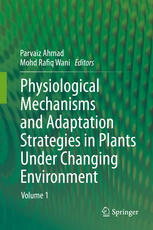

Most ebook files are in PDF format, so you can easily read them using various software such as Foxit Reader or directly on the Google Chrome browser.
Some ebook files are released by publishers in other formats such as .awz, .mobi, .epub, .fb2, etc. You may need to install specific software to read these formats on mobile/PC, such as Calibre.
Please read the tutorial at this link: https://ebookbell.com/faq
We offer FREE conversion to the popular formats you request; however, this may take some time. Therefore, right after payment, please email us, and we will try to provide the service as quickly as possible.
For some exceptional file formats or broken links (if any), please refrain from opening any disputes. Instead, email us first, and we will try to assist within a maximum of 6 hours.
EbookBell Team

4.7
106 reviewsThe global population is growing at an alarming rate and is anticipated to reach about 9.6 billion by the end of 2050. Addressing the problem of food scarcity for budding population vis-� -vis environmental changes is the main challenge plant biologists face in the contemporary era. Plant growth and productivity are scarce in many areas of the world due to a wide range of environmental stresses. The productive land is dwindling progressively by various natural and anthropogenic means that lead to enormous crop losses worldwide. Plants often experience these stresses and have the ability to withstand them. However, when the stress exceeds the normal tolerance level, plants accumulate organic osmolytes, osmoprotectants, cryoprotectants and antioxidant enzymes, which helps them tolerate these stresses and assist in their acclimatization towards the particular ambiance needed for maintaining their growth and development.
Physiological Mechanisms and Adaptation Strategies in Plants Under Changing Environment, Volume 1 discusses drought and temperature stresses and their mitigation through different means. This volume illuminates how plants that are bombarded by diverse and changing environmental stimuli undergo appropriate physiological alterations that enable their survival. The information covered in the book is also useful in building apposite strategies to counter abiotic and biotic stresses in plants. Written by a diverse group of internationally renowned scholars, Physiological Mechanisms and Adaptation Strategies in Plants Under Changing Environment, Volume 1 is a concise yet comprehensive resource that will be beneficial for the researchers, students, environmentalists and soil scientists of this field.